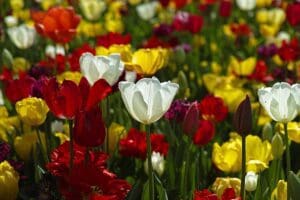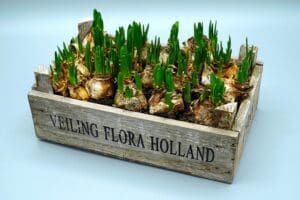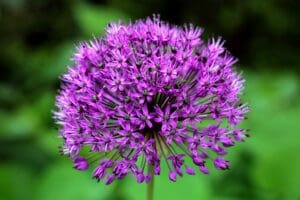
One of the most prevalent flowers around Easter time is the hyacinth. They’re known for their large, colorful flowers and their beautiful fragrances. As we have mentioned before, they are a fall planted bulb and usually dry off come summer when their leaves die away. They’re suitable for a sunny spot with soil that is well-drained and where the bulbs are going to become warm and reasonably dry during the summer. If they aren’t warm in the summer, it’s possible they aren’t going to flower. They also can be planted indoors.
Below are some tips for planting hyacinth:
- Select a spot that’s mostly sunny with fairly well-draining soil.
- It’s fairly simple to plant hyacinth bulbs. They look like small onions, with some wiry roots that grow out from one side and a point on the other side. The bulb should be planted so the roots point down.
- Dig a hole that is 6 to 8 inches deep and then put your bulb in it. Then cover it with soil.
- If you are planting the bulbs in your flowerbed, give them around 3” in between each one. If you’re planting in a container, you can put them a bit closer together.
- After your bulbs have been planted, water them well so that the soil will settle.
The bulbs are going to flower in springtime. Once their flowers die, their warm rest period starts. They don’t require a lot of water during the summer. Leaves also are going to die back. It’s your choice about if you want to tidy the plant up, taking off the leaves or just allowing nature to take its course.
Diseases That Affect Hyacinth
Hyacinths are prone to grey mod. This is also called botrytis and it’s a fungus which infects overly moist or damaged plants. When you have really wet soil, you are going to have a better chance of a plant with grey mold. It’s going to quickly spread and may cause quite a bit of damage to your healthier plants. How the mold is identified will usually depend on the plant’s conditions and type. However, generally there is going to be some white spots on its leaves.
As the fungus continues growing, it’s going to turn grey and then brown. It’s going to cover the majority of leaves, causing the leaves to wilt. In humid and warmer areas, there could be a web appearing on the leaves. That’s how the spores from the mold grow and then spread. If they’re released from the webbing, they spread. That will mean that buds, stems, petals and flowers all can get infected.
You can only get the problem under control by removing those plants with the fungus, then destroy them. Clean the mulch and dirt out that surrounded the plant so that you are sure your surrounding flowers aren’t infected too. You also want to handle your plants carefully. It will attack the damaged flowers, so if you’re transplanting hyacinths from pots that began inside, be sure that you’re very careful with them.
Hyacinth Health Benefits
It’s undeniable that hyacinths smell good and are beautiful. But they also have many health benefits that they offer. One that you may not know about is that hyacinths are great for a lot of skin disorders. Mix hyacinth blooms with turmeric and rice flower. This will make a great eczema treatment. You can use their stems for treating cholera. The beans can be stir fried for reducing vomiting and nausea. There is a juice in the pods that you can extract that’s wonderful for treating sore throats. Juice helps with healing inflammation.
As you can see, hyacinths are a beautiful flower, and they can also offer a lot of health benefits. Before you make any decisions, however, make sure that you consult your doctor. There are a lot of great natural remedies that you can enjoy but it’s always better to consult a physician.
We hope that you enjoyed this little look at one of the most beautiful fall planted bulbs. If you are interested, we offer full bulb planting as one of our services. Contact us today to find out what we can do for you.




